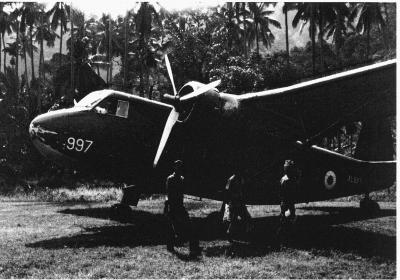The Scottish Aviation Twin Pioneer utility transport saw limited commercial and military service, mainly in the UK and some Commonwealth countries.
Despite its name, the Twin Pioneer is an all new aircraft compared with the Scottish Aviation Pioneer. The original Pioneer was a high wing single engined five seat light aircraft powered by an Alvis radial engine which was built in small numbers for the Royal Air Force for liaison duties.
The Twin Pioneer is also powered by Alvis radials and features a high wing, but is much larger, capable of seating up to 16 passengers in the main cabin. Designed for both civil and military applications, the Twin Pioneer was also one of the few postwar aircraft to feature a high wing and tailwheel undercarriage, while its triple vertical tail arrangement makes it easily recognisable.
The prototype Twin Pioneer flew for the first time on June 25 1955, and the first production examples were delivered from April 28 1956. By mid 1964, when production ceased, 94 of three different models had been built. Britain's Royal Air Force was the largest customer, taking delivery of 39 Twin Pioneers.
The RAF used its Twin Pioneers for a variety of transport and liaison roles, and they could carry 13 troops, or 11 paratroops, or six stretchers and five sitting casualties or medical attendants. Another military operator was Malaya/Malaysia.
The initial Twin Pioneer production model was the Series 1, powered by two 410kW (550hp) Alvis Leonides 514/8 radials. The Series 2 was powered by Pratt & Whitney R-1340 radials. Final production was of the Series 3 (described above), powered by 475kW (640hp) Leonides 531/8 radials. In RAF service the Series 1 was designated Twin Pioneer CC1, and the Series 3 was the Twin Pioneer CC2.
In 2002 only a handful of Twin Pioneers remained in service, including two Series 3s registered in Australia.
|
|





